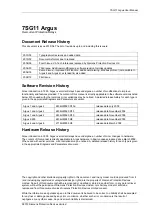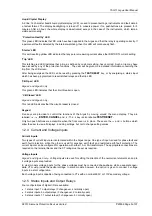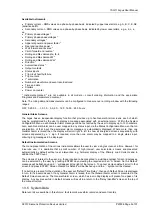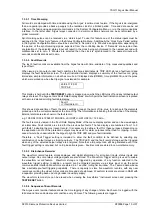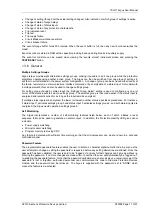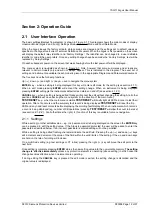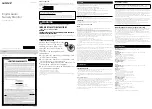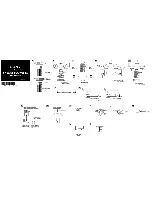
7SG11 Argus User Manual
©2013 Siemens Protection Devices Limited
P20006 Page 6 of 37
9 status inputs, 7 output relays (3 changeover, 4 normally open)
Single pole Argus relays are only available with 1 status input and 7 output relays.
Status Inputs
Status inputs can be programmed to perform one or more of the following functions:
Switch to an alternative settings group
Trigger the storage of a waveform record
Trigger a textual fault record
Trigger operation of the I
2
summation and trip count features
Inhibit operation of any one or more protection functions
Monitor the health of the tripping circuit
Synchronise the real-time clock
Reset of latched output contacts
Reset of counter instruments
Start an auto-reclose sequence
Register a general alarm
Initiate an external circuit breaker fail condition
Additionally, each input can be independently programmed to operate with time delayed pick-up and/or time
delayed drop-off. The status inputs have a default pick-up delay setting of 20ms which provides security against
operation in the presence of an a.c. input voltage. If instantaneous operation is preferred then the pick-up delay
should be set to zero.
It is also possible to invert the operation of a status input. If an input is configured to be inverted, then any function
assigned to that input becomes active upon de-energisation of the input.
Output Relays
Outputs are user programmable to operate from any or all of the protection characteristics. In addition they can be
programmed to generate outputs from the I
2
summation alarm, the trip counter alarm, the status inputs and the
self-monitoring feature (watchdog). In their normal mode of operation, output contacts remain energised for the
duration of fault current, but with a user programmable minimum time. Alternatively, outputs can be programmed
to operate as latching contacts if required. Latched output relays can be reset either by pressing the
TEST/RESET
button, by sending an appropriate communications command or electrically via a status input. A
trip test feature is provided to operate the output contacts.
1.2.6 Auxiliary Supply
A d.c. voltage of the appropriate level must be supplied onto the correct terminals on the rear of the case.
1.2.7 Communications
A pair of fibre-optic ST
TM
(BFOC/2.5) bayonet connectors, optimised for glass-fibre, are fitted to the rear of the
case – one transmit and one receive. These are used as the standard interface for all communications with the
Argus. An alternative RS485 option is available.
The Argus is supplied using IEC 60870-5-103 as its default communications. Modbus is available via a setting in
the communications menu (not available in Argus 4 and Argus 6).
1.2.8 Terminals
These are of a modular design. Depending on the model either 1, 2 or 3 terminal blocks will be fitted with 28
terminals per block. All inputs and outputs (except for the serial communications interface) are made through
these connectors.
1.3 Functionality
1.3.1 Protection
Argus provides comprehensive overcurrent protection with programmable input and output matrix. In addition 8
setting groups enable a flexible approach to protection settings.
Up to four current measuring inputs are available in the Argus relays and these may be phase-fault overcurrent,
earth-fault overcurrent or SEF/REF depending on the model.










